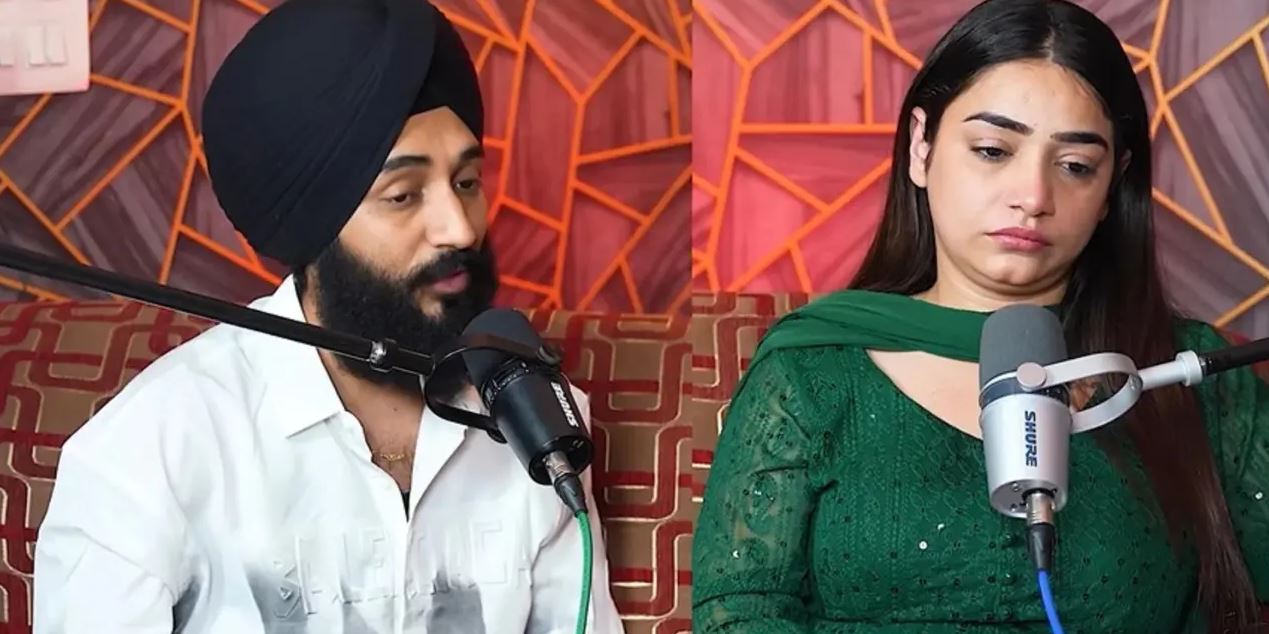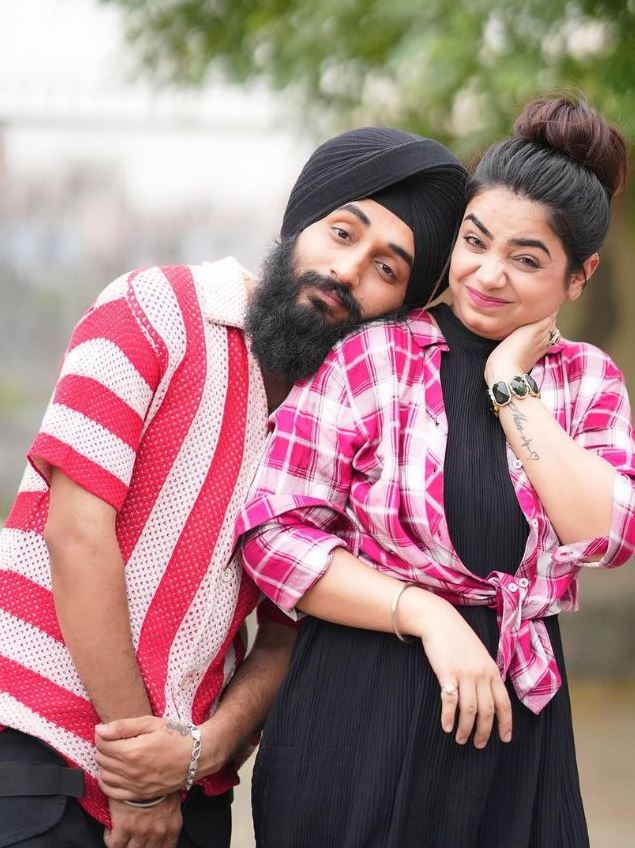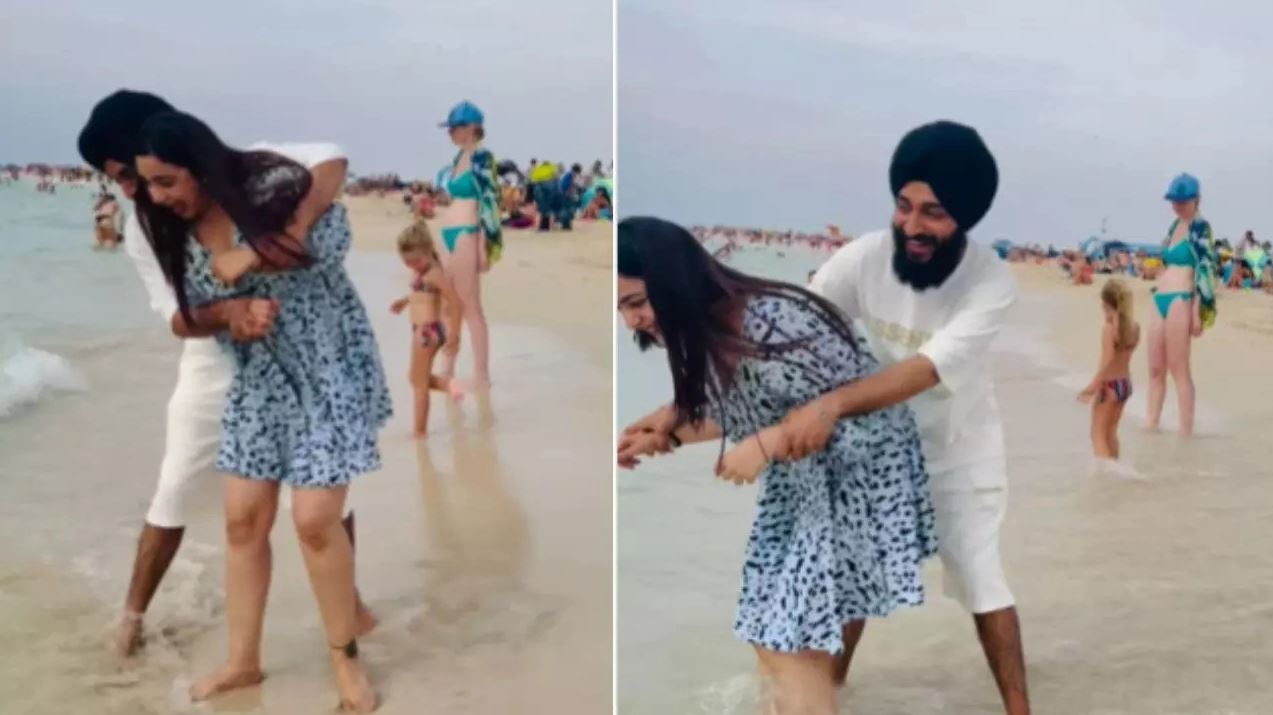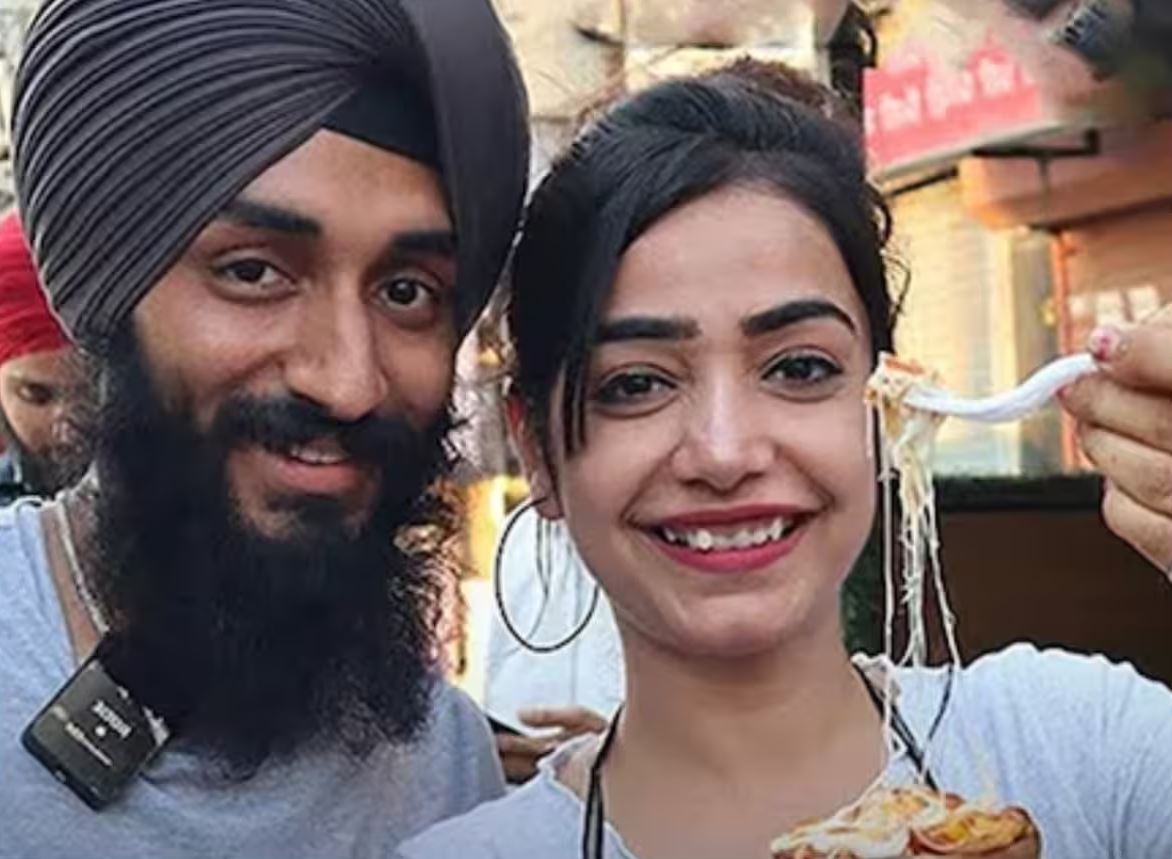Unpacking the Controversy The Kulhad Pizza Viral Video Explained
The story of Sehaj Arora and Gurpreet Kaur, the faces behind the “Kulhad Pizza Viral Video,” encapsulates a dramatic shift from viral fame to a center of controversy. Originally celebrated for their innovative culinary creations, the couple first captured public attention through a charming Instagram video. In this clip, they were seen crafting unique pizza cones using kulhads—traditional small clay cups typically used for chai. Their novel approach not only showcased their creativity but also their cultural heritage, quickly garnering millions of likes and bringing them under the social media spotlight.
However, their journey took a tumultuous turn with the leak of a video that purportedly showed them in a private, intimate moment. This “Kulhad Pizza Viral Video” rapidly spread across various online platforms, igniting a firestorm of public discourse. The video, allegedly showing the couple in a compromising situation, was claimed by Sehaj and Gurpreet to be artificial and AI-generated, suggesting malicious intent to tarnish their reputation.
In response to the ensuing backlash and personal harassment they faced, Sehaj publicly addressed the issue. He vehemently denied the authenticity of the video, declaring it a result of digital manipulation and stating that it was an attempt at blackmail. This assertion was part of a broader plea to their audience and the general public, urging them to consider the ramifications of sharing such content without verification.
The public reaction was mixed, with many expressing sympathy towards the couple’s plight, while others remained skeptical. The incident sparked widespread discussions on privacy, the ethical use of AI in media, and the impact of viral fame on personal lives. Through this ordeal, Sehaj and Gurpreet found themselves navigating not only the challenges of sudden internet fame but also the darker undercurrents that can accompany it.
Section 1: Origin and Rise to Fame
The remarkable ascent of Sehaj Arora and Gurpreet Kaur, known collectively as the Kulhad Pizza couple, is a testament to the power of viral social media content. Their journey to stardom began with an innovative culinary concept: cheese pizza cones baked in kulhads, which are small, traditional clay cups commonly used in India for serving chai. The idea caught the eye of Instagram user @therealharryuppal, who posted a video on July 10, 2022. The video showcased the couple skillfully preparing these unique pizza cones at their eatery in Jalandhar, Punjab. The combination of culinary innovation and cultural uniqueness struck a chord, rapidly capturing the fascination of viewers worldwide.
This original Instagram reel exploded in popularity, amassing over 4.9 million likes over two years. It didn’t just stay confined to Instagram; @therealharryuppal also uploaded a full-length video on YouTube the following day, which itself garnered over 3.4 million views. This exposure was a significant catalyst in their meteoric rise in the digital world. By April 2024, the couple’s personal Instagram accounts, @kaurgeous_roop and @sehaj_arora_, had seen substantial growth, reaching 650,000 and 1.2 million followers respectively. This growth was not just in numbers but also in engagement, with each post drawing thousands of likes and numerous comments, illustrating the couple’s expanding influence.

The viral success of the Kulhad Pizza video was a game-changer, propelling Sehaj and Gurpreet to celebrity status on social media. Their unique blend of traditional Indian elements with a modern twist on fast food captured the imagination of a global audience, leading to increased media coverage and invitations to food festivals and culinary talks. This exposure further solidified their status as innovators and influencers in the culinary world.
Section 2: The Leaked Video Controversy
However, with increased fame came increased scrutiny and, unfortunately, vulnerability. On September 20, 2023, a new chapter unfolded that threatened to overshadow their accomplishments. A video allegedly showing Sehaj and Gurpreet in an intimate encounter began circulating on various digital platforms, including Telegram and Twitter/X. The video’s spread was catalyzed by screenshots and shares from an X account, @ksvirk120619, which claimed to have the complete video and offered to distribute it directly to individuals via messages. The account was later suspended, but the damage had been done—the video had already reached a wide audience.
The couple was quick to respond to the leak. Sehaj took to Instagram to claim that the video was not only non-consensual but also AI-generated, suggesting it was a fabricated piece meant to extort or defame them. This statement marked the beginning of a public and legal battle to clear their names and protect their privacy. Sehaj’s assertive response highlighted the dangers of deepfake technology and its potential misuse against public figures.

Recognizing the severity of the situation, the couple reported the incident to the local police, initiating an investigation into the source of the leak and the authenticity of the video. They also made several public statements across social media platforms, reiterating their stance that the video was fake and pleading with their audience to refrain from spreading it further. This period was particularly trying for the couple as they navigated the complex intersection of privacy rights, digital ethics, and the unregulated nature of viral content on social media.
The controversy surrounding the leaked video not only posed a significant personal and professional challenge for Sehaj and Gurpreet but also sparked a broader discourse on the responsibilities of social media platforms in preventing the spread of potentially harmful content. It served as a stark reminder of the darker side of internet fame and the vulnerabilities associated with living in the digital age.
Section 3: Public and Media Response
The leaked video alleging to show Sehaj Arora and Gurpreet Kaur in an intimate setting triggered a broad spectrum of reactions from the public and media alike. The video’s circulation through social media channels led to immediate community feedback, with prominent users and influencers voicing their opinions and concerns.
One significant reaction came from @lakshayonly, a well-known Twitter user, who tweeted his thoughts on the matter. His tweet emphasized the unfortunate nature of the incident and urged people to refrain from forwarding or sharing the video. This tweet alone garnered over 9,300 likes and was widely viewed, indicating the sympathy and support for the couple within parts of the online community. TikToker @hassiyakaro also weighed in by reposting Sehaj’s video in which he addressed the allegations, asserting the video was AI-generated. This repost helped spread the couple’s message to a broader audience, showcasing the supportive role social media could play in times of personal crises.

However, the reaction was not uniformly supportive. The incident quickly became fodder for memes and viral jokes, spreading across platforms like Facebook and Instagram. One notable reaction video was posted by Super Khalsa, a pro wrestler and Facebook influencer, who expressed his disappointment over how memes related to the video were proliferating. His reaction video, highlighting the insensitivity of such memes, received over 1 million views and about 16,000 reactions, indicating significant engagement with his stance on the issue.
This mixed response highlighted a crucial aspect of digital culture: while social media can rally support and offer a platform for clarification, it can also perpetuate harm through insensitive sharing and memeing of personal incidents. The spread of the controversy not only dominated the news cycle but also sparked debates on digital privacy, the ethics of content sharing, and the human impact of viral fame.
Section 4: Impact on the Couple
The immediate and most profound impact of the leaked video controversy was on Sehaj Arora and Gurpreet Kaur themselves. During a time that should have been filled with personal joy after the birth of their son, the couple faced unprecedented stress due to the widespread distribution and discussion of the video. Sehaj’s emotional response in a subsequent video, where he appeared visibly distressed, underscored the personal toll the incident took on them. He reiterated the pain the rumors and the video’s spread were causing, especially concerning his wife’s mental health, who was dealing with the challenges of new motherhood amid a public scandal.
Their continued statements to the public were heartfelt appeals for empathy and respect for their privacy. These appeals highlighted the often overlooked emotional and psychological impacts of internet controversies on the lives of individuals involved. The situation also led to a reevaluation of their business strategies, as they had to manage the dual task of safeguarding their family’s privacy while maintaining their business reputation.
In the broader context, the incident served as a stark reminder of the precarious balance between public life and personal privacy in the digital age. For Sehaj and Gurpreet, the controversy was not just about a moment of unwanted fame but a prolonged battle to protect their personal lives and dignity in an increasingly interconnected world. The support they received showed the potential for community solidarity, while the negative reactions and memes illustrated the challenges of maintaining privacy and respect in the face of viral social media content.

In conclusion, the Kulhad Pizza video controversy revealed the multifaceted impact of social media on personal lives, driving conversations about the responsibilities of online platforms and the community towards individuals’ rights to privacy and dignity.
The Kulhad Pizza Viral Video saga encapsulates the double-edged sword of viral fame and the inherent vulnerabilities linked with digital exposure. As we have seen with Sehaj Arora and Gurpreet Kaur, the creators behind the innovative Kulhad Pizza, an initial burst of popularity on social media can quickly spiral into a precarious situation. Their ascent to fame through a delightful culinary innovation was overshadowed by a controversial leaked video that claimed to show them in an intimate setting, a video they staunchly declared was AI-generated and false.
This incident raises significant concerns about the role of AI in generating fake content, posing profound ethical and legal challenges in our digital era. The ability of AI to create convincingly realistic yet entirely fictional media content can wreak havoc on personal lives, reputations, and businesses, necessitating a serious discourse on the boundaries and regulations needed around AI technologies.
Moreover, the Kulhad Pizza Viral Video highlights the critical responsibilities of social media users and platforms. While platforms facilitate widespread connectivity and innovation, they also must enforce robust measures to prevent the spread of harmful content and protect user privacy. Social media users, on the other hand, must navigate these platforms with a heightened sense of responsibility and ethics, understanding the impact their shares and likes have on the real lives behind the screens.
In conclusion, the journey of the Kulhad Pizza couple from viral sensations to victims of a privacy breach serves as a stark reminder of the potential harms of digital exposure. It underscores the urgent need for comprehensive digital literacy and responsible platform governance to safeguard individuals against the unintended consequences of a connected world.
Video -